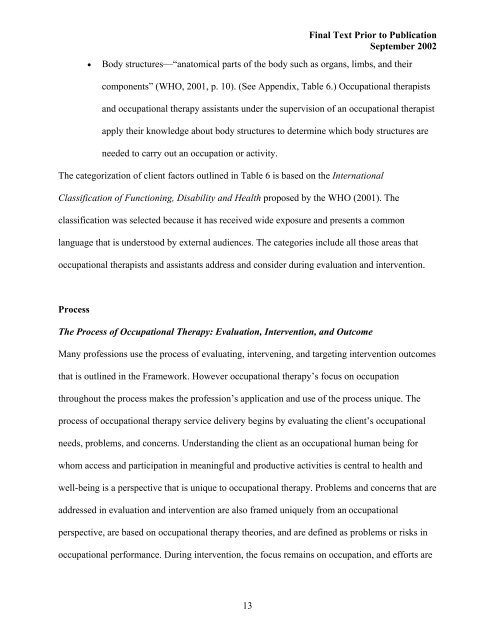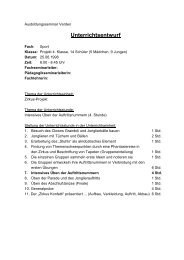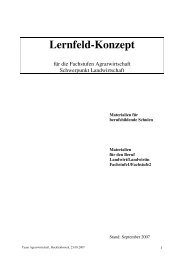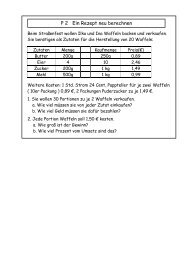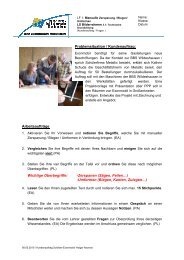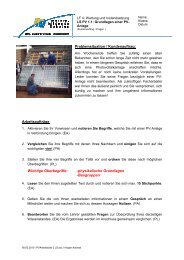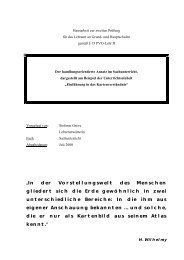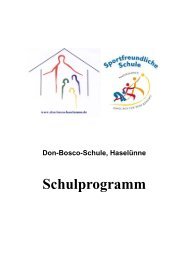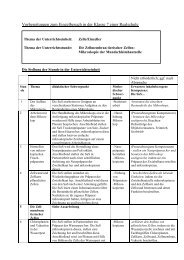occupational therapy practice framework domain and process - nibis
occupational therapy practice framework domain and process - nibis
occupational therapy practice framework domain and process - nibis
You also want an ePaper? Increase the reach of your titles
YUMPU automatically turns print PDFs into web optimized ePapers that Google loves.
13<br />
Final Text Prior to Publication<br />
September 2002<br />
• Body structures—“anatomical parts of the body such as organs, limbs, <strong>and</strong> their<br />
components” (WHO, 2001, p. 10). (See Appendix, Table 6.) Occupational therapists<br />
<strong>and</strong> <strong>occupational</strong> <strong>therapy</strong> assistants under the supervision of an <strong>occupational</strong> therapist<br />
apply their knowledge about body structures to determine which body structures are<br />
needed to carry out an occupation or activity.<br />
The categorization of client factors outlined in Table 6 is based on the International<br />
Classification of Functioning, Disability <strong>and</strong> Health proposed by the WHO (2001). The<br />
classification was selected because it has received wide exposure <strong>and</strong> presents a common<br />
language that is understood by external audiences. The categories include all those areas that<br />
<strong>occupational</strong> therapists <strong>and</strong> assistants address <strong>and</strong> consider during evaluation <strong>and</strong> intervention.<br />
Process<br />
The Process of Occupational Therapy: Evaluation, Intervention, <strong>and</strong> Outcome<br />
Many professions use the <strong>process</strong> of evaluating, intervening, <strong>and</strong> targeting intervention outcomes<br />
that is outlined in the Framework. However <strong>occupational</strong> <strong>therapy</strong>’s focus on occupation<br />
throughout the <strong>process</strong> makes the profession’s application <strong>and</strong> use of the <strong>process</strong> unique. The<br />
<strong>process</strong> of <strong>occupational</strong> <strong>therapy</strong> service delivery begins by evaluating the client’s <strong>occupational</strong><br />
needs, problems, <strong>and</strong> concerns. Underst<strong>and</strong>ing the client as an <strong>occupational</strong> human being for<br />
whom access <strong>and</strong> participation in meaningful <strong>and</strong> productive activities is central to health <strong>and</strong><br />
well-being is a perspective that is unique to <strong>occupational</strong> <strong>therapy</strong>. Problems <strong>and</strong> concerns that are<br />
addressed in evaluation <strong>and</strong> intervention are also framed uniquely from an <strong>occupational</strong><br />
perspective, are based on <strong>occupational</strong> <strong>therapy</strong> theories, <strong>and</strong> are defined as problems or risks in<br />
<strong>occupational</strong> performance. During intervention, the focus remains on occupation, <strong>and</strong> efforts are


